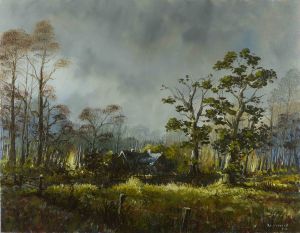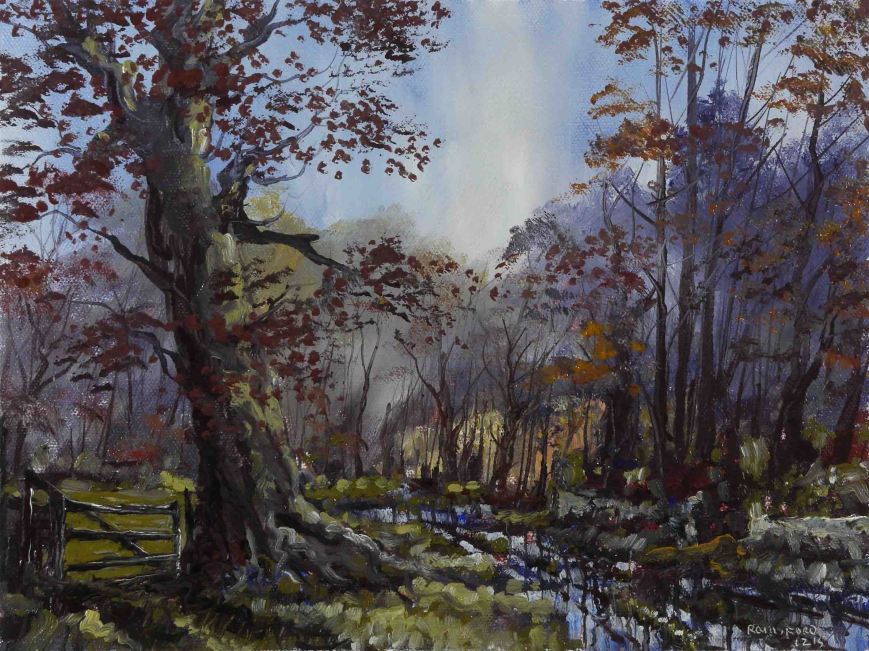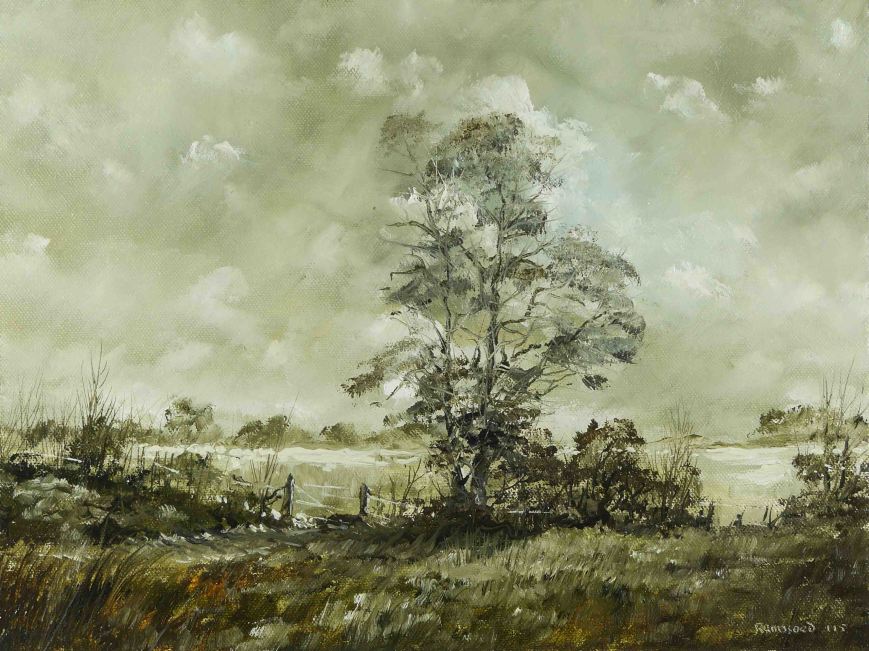Still a little snow here and there. I have exaggerated the amount for dramatic effect.
I used low odour solvent in this painting. It did not suit my method which uses a lot of solvent, allowing it to evaporate and building up layers of paint. A bit like a watercolour method but using solvent instead of water. This solvent did not evaporate quickly but lingered on causing all kinds of issues. It would be OK in traditional oil painting where layers are allowed to dry for a few days before proceeding. These issues relate to my ‘wet on wet’ method where the under paint must be ‘dryish’ before later layers are added. I don’t like thick ‘greasy’ paint as introducing fine lines or details is nearly impossible.
The low odour solvent has a high boiling point so it evaporates much more slowly, thus reducing the concentration of vapour by releasing it over a longer time. Its probably in the interest of safety, reducing the exposure and fire hazard. This issue arose because my usual supplier of W&N white spirits is now shipping in small containers only, again to do with health and safety. These small quantities will work out expensive but I have no alternative at the moment.
This painting uses only 4 colours (Indian yellow, Permanent Rose, Raw Umber, Cerulean Blue) plus black and white. The medium used is Liquin and White Spirits. The size is 16.5″ x 12″.
Here’s the video, see you soon.















